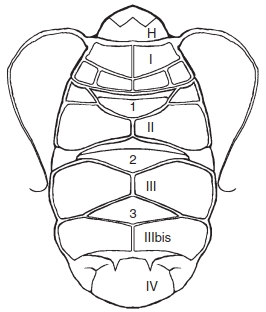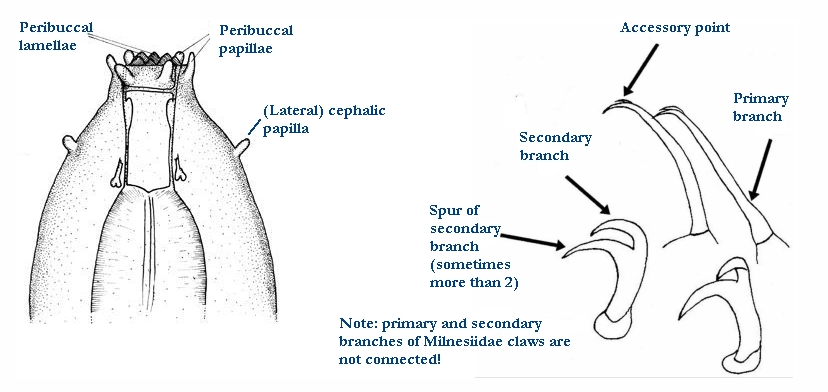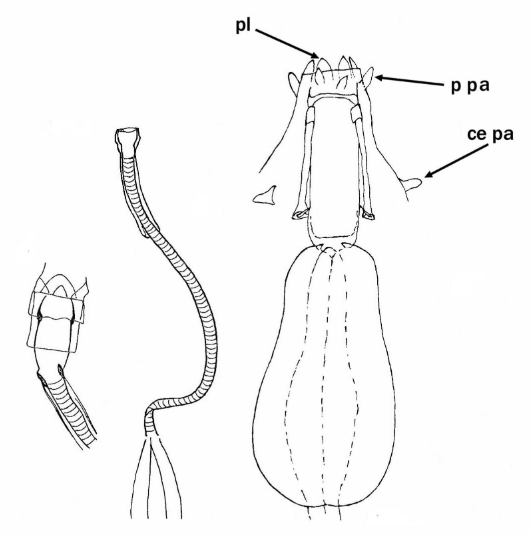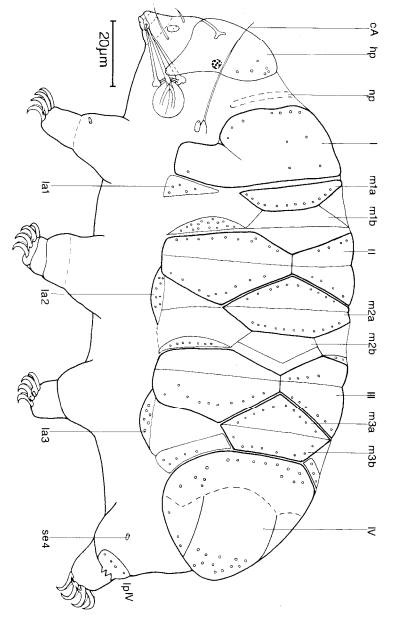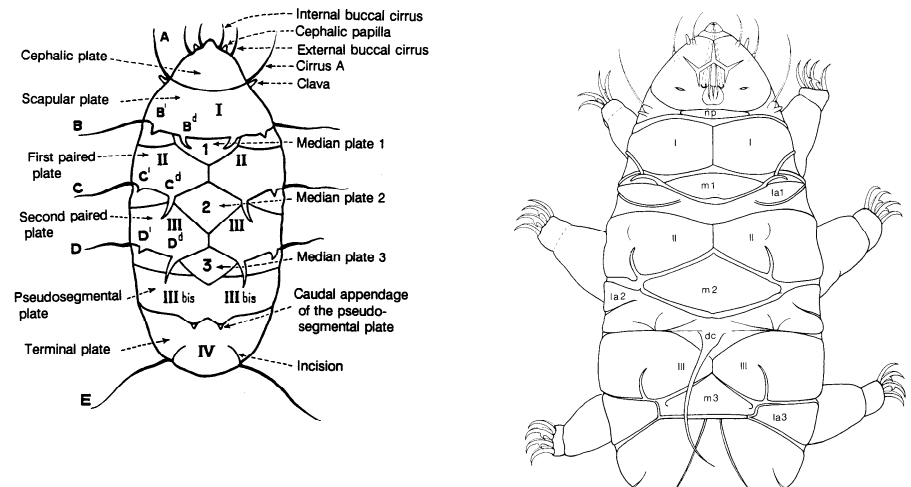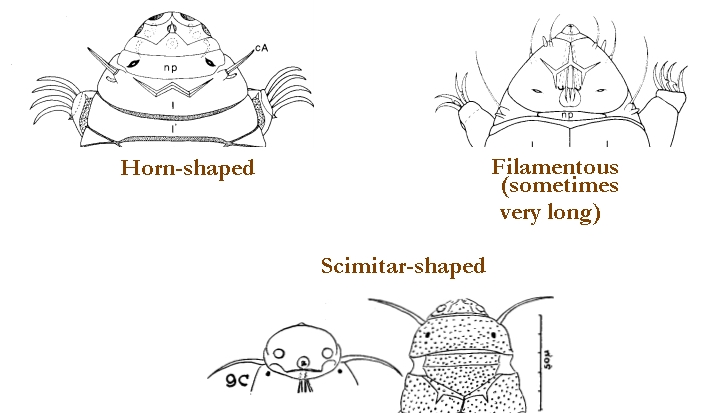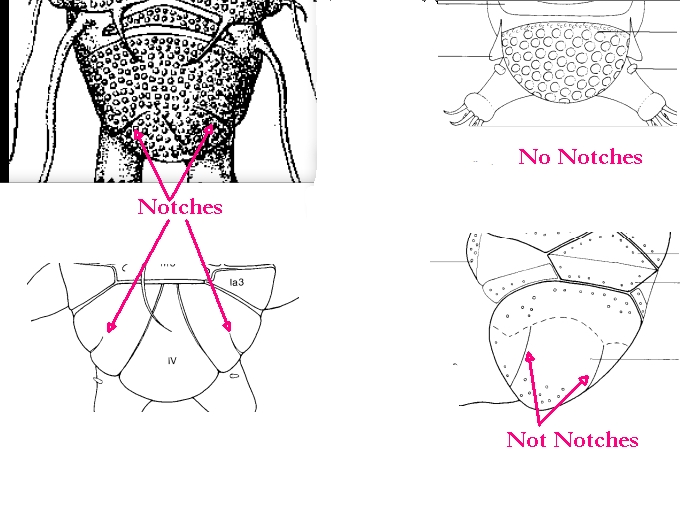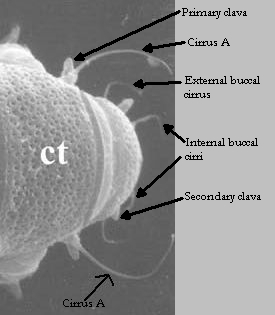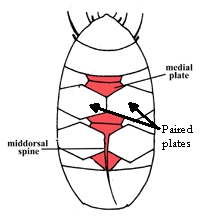From Ramazzotti & Maucci: “After the second paired plate, or after the third median plate if present, follows a pseudosegmental plate, paired or unpaired, and then the terminal plate; buccal cirri present; cirri A of filament shape.”
From Kristensen 1987: “Echiniscidae with black eyes: rigid buccal canal, stylet supports may be present, but very tiny and located close to the margin of pharyngeal bulb. All median plates present, plates 1 and 2 divided. Pseudosegmental plates IV’ paired or unpaired. Male with enlarged secondary clavae. Colour yellow or red. Emended description: The dorsal plates can be very difficult to see in some species, especially in the limnic forms. This must be considered as a secondary reduction. The head plate is large and may be deeply faceted or divided into smaller pieces. The small neck plate is not always visible. The segmental plate on the trunk consists of an unpaired scapular plate (I), a paired segmental plate II and III, and the caudal plate IV with terminal indentations. The pseudosegmental plate IV’ may be paired or unpaired. This character is highly variable, e.g. in the type species, P. suillus, some specimens have paired plates IV’, while other specimens from the same population have a single, unpaired plate. The same is true in the divided median plates 1 and 2; in nearly all species of Pseudechiniscus the plates are divided; this character may be overlooked if the preparation is not in very good condition. Median plate 3 is always undivided. Lateral segmental plates are present only in the more advanced species of Pseudechiniscus. The lateral plates are found only in connection with the trunk cirri B, C, D and E (P. victor-group) or lateral papillae (P. conifer-group). The lateral plates may be armed with a spine fringe. Leg plates are only well developed in species with trunk appendages. The plate of leg IV, especially, may have a dentated collar or spine fringe. Ventral plates are always absent. The cephalic cirri consist of papillate primary clavae, the cirri A, the papillate secondary clavae, external and internal cirri. The cirri can be split up in the tip as a tuft. The cirrus lack real cirrophore, but the base is slightly bulbous. The genus Pseudechiniscus consists of two groups, the suillus/conifer group without trunk cirri, and the victor group, where trunk cirri or spines are present. Leg sense organs are found on both leg I and IV. Typical tiny basal secondary spurs are located only on the internal claws. The buccal apparatus consists of a relatively long and rigid buccal tube, stylet supports are absent or reduced to thin fibres and very long stylets. The furcae of the stylets insert on the pharyngeal bulb. The armature of the pharyngeal bulb consists of bar-shaped placoids surrounded by thin cuticular lining.”
From Vecchi et al. 2016: “Echiniscid with pseudosegmental plate. Black eyes. Buccal cirri present, Filamentous cirri A present. Rigid buccal tube, stylet supports may be present, but very tiny and located close to the margin of pharyngeal bulb. Lateral and dorsal trunk filaments or spines generally absent or reduced in number and/or size. Notched collar (or spine fringe) on hind legs absent.”
Black eyes, no dentate collar.
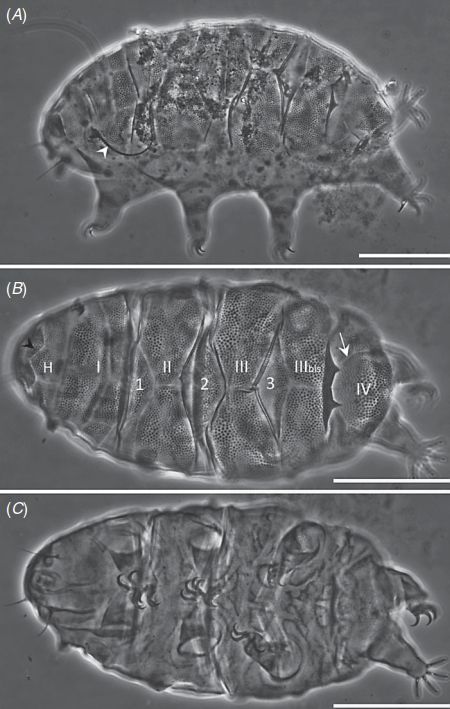
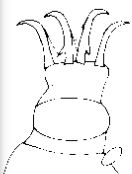
Citations:
Kristensen RM. 1987. Generic revision of the Echiniscidae (Heterotardigrada), with a discussion of the origin of the family. pp. 261-335 in Bertolani R (ed). Biology of Tardigrades: Selected symposia and monographs.
Ramazzotti G, Maucci W. 1983. Il phylum Tardigrada(III edizione riveduta e aggiornata). English translation by C. W. Beasley, 1995. Memorie dell’ Istituto Italiano di Idrobiologia 41: 1-1012.
Vecchi M, Cesari M, Bertolani R, Jönsson KI, Rebecchi L, Guidetti R. 2016. Integrative systematic studies on tardigrades from Antarctica identify new genera and new species within Macrobiotoidea. Invertebrate Systematics. 30: 303-322.
